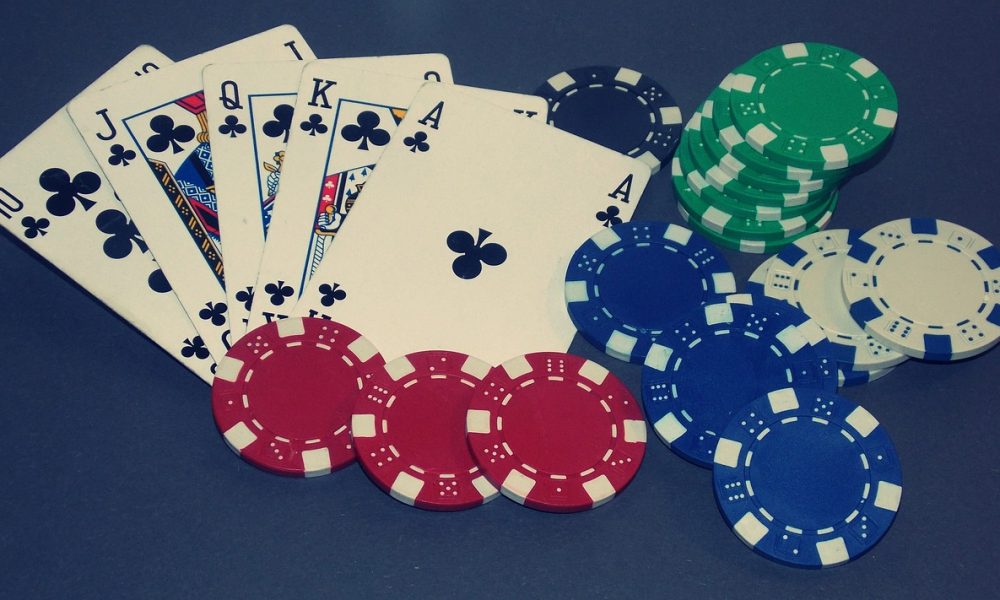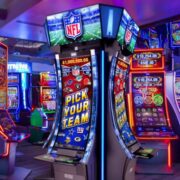In today’s world, businesses have numerous options to promote their products and services to their target audience. Two of the most popular marketing tactics are Guerrilla Marketing and Experiential Marketing. Guerrilla Marketing and Experiential Marketing are both creative and unconventional ways of advertising. However, they have their differences. This blog post will explore the differences between Guerrilla Marketing and Experiential Marketing and when to use each marketing tactic.
What is Guerrilla Marketing?
Guerrilla Marketing is a marketing tactic that involves low-cost and unconventional methods to promote a product or service. It is a creative and unconventional approach that aims to surprise and engage the audience. Guerrilla Marketing campaigns can range from flash mobs, street art, or stunts. Guerrilla Marketing is suitable for small businesses with a limited budget, as it requires creativity rather than a large budget.
Some characteristics of Guerrilla Marketing are as follows:
It is low-cost and unconventional.
It targets a specific audience.
It is creative and unique.
It aims to create a buzz and go viral.
Some examples of Guerrilla Marketing campaigns are as follows:
Red Bull Stratos – The Red Bull Stratos campaign involved a high-altitude skydive that broke the sound barrier. The event was live-streamed, and it generated millions of views and impressions.
Ikea – Ikea placed a sofa on the streets of Paris, France, with the message “Find comfort in the city.” The campaign aimed to promote Ikea’s furniture and show how it can fit in any urban space.
What is Experiential Marketing?
Experiential Marketing is a marketing tactic that creates a memorable and immersive experience for the audience. It is a strategy that aims to create an emotional connection between the brand and the audience. Experiential Marketing can range from pop-up shops, immersive events, or interactive installations. Experiential Marketing is suitable for brands that want to create a lasting impression on their audience and build brand loyalty.
Some characteristics of Experiential Marketing are as follows:
It is immersive and memorable.
It targets a specific audience.
It creates an emotional connection between the brand and the audience.
It aims to generate brand awareness and loyalty.
Some examples of Experiential Marketing campaigns are as follows:
Coca-Cola’s “Happiness Machine” – Coca-Cola installed a vending machine that dispensed not only the soda but also balloons, flowers, and even a pizza. The campaign aimed to spread happiness and create a memorable experience for the audience.
Nike’s “Unlimited Stadium” – Nike created an interactive running track in the shape of a shoe. The campaign aimed to promote Nike’s running shoes and create an immersive experience for the audience.
Differences between Guerrilla Marketing and Experiential Marketing
While both Guerrilla Marketing and Experiential Marketing are unconventional marketing tactics, they have significant differences in terms of their target audience, goals and objectives, tactics and strategies, budget and resources, and metrics and measurement.
Target audience
Guerrilla Marketing campaigns typically target a younger, tech-savvy audience that spends more time on social media. Experiential Marketing campaigns, on the other hand, target a broader audience and aim to create an emotional connection with the brand.
Goals and objectives
Guerrilla Marketing campaigns aim to create a buzz, generate brand awareness, and go viral. Experiential Marketing campaigns aim to create an emotional connection with the brand, build brand loyalty, and provide a memorable experience for the audience.
Tactics and strategies
Guerrilla Marketing campaigns involve unconventional and creative tactics, such as flash mobs, street art, or stunts. Experiential Marketing campaigns involve immersive and interactive tactics, such as pop-up shops, immersive events, or interactive installations.
Budget and resources
Guerrilla Marketing campaigns typically require low budget and resources, as they rely on creativity rather than money. On the other hand, experiential marketing campaigns require a higher budget and resources, as they involve building installations, creating immersive experiences, and providing free samples or giveaways.
Metrics and measurement
Guerrilla Marketing campaigns typically measure success based on social media engagement, shares, and impressions. Experiential Marketing campaigns measure success based on attendee engagement, satisfaction, and brand loyalty.
When to use Guerrilla Marketing?
Guerrilla Marketing is suitable for small businesses with a limited budget, as it requires creativity rather than a large budget. Guerrilla Marketing campaigns can be effective in generating brand awareness and creating a buzz. However, they may not be suitable for all businesses, as they can be risky and may not generate the desired ROI.
Advantages of Guerrilla Marketing:
Low cost and low-risk marketing tactic
Generates brand awareness and creates a buzz
Can go viral and reach a broader audience
Best practices for Guerrilla Marketing:
Know your audience and target them specifically
Create a memorable experience that resonates with your audience
Use social media to amplify your campaign and reach a broader audience
Limitations of Guerrilla Marketing:
Can be risky and may not generate the desired ROI
Requires creativity and may not be suitable for all businesses
May not reach a broad audience
When to use Experiential Marketing?
Experiential marketing suits brands that want to create a lasting impression on their audience and build brand loyalty. Experiential Marketing campaigns can effectively create an emotional connection with the brand and generate brand loyalty. However, they require a higher budget and resources than Guerrilla Marketing campaigns.
Advantages of Experiential Marketing:
Creates a lasting impression and emotional connection with the brand
Builds brand loyalty and generates repeat business
Provides a memorable experience for the audience
Best practices for Experiential Marketing:
Know your audience and create an experience that resonates with them
Use interactive and immersive tactics to engage the audience
Measure success based on attendee engagement, satisfaction, and brand loyalty
Limitations of Experiential Marketing:
Requires a higher budget and resources than Guerrilla Marketing
May not generate the desired ROI if not executed properly
May not reach a broad audience
Conclusion
Guerrilla and Experiential Marketing are unconventional marketing tactics that aim to generate brand awareness and create a memorable experience for the audience. While Guerrilla Marketing focuses on creating a buzz and going viral, Experiential Marketing aims to create an emotional connection with the brand and build brand loyalty. Both tactics have their advantages and limitations, and businesses should choose the tactic that best fits their goals, target audience, and budget.
FAQs
Q1. What is an offline marketing agency?
An offline marketing agency is a marketing agency that specializes in traditional marketing tactics, such as print ads, billboards, and TV commercials. Unlike digital marketing agencies that focus on online marketing channels, offline marketing agencies specialize in reaching audiences through offline channels.
Q2. What is an experiential marketing agency?
An experiential marketing agency is a marketing agency that specializes in creating immersive and interactive experiences for the audience. Experiential marketing agencies use pop-up shops, immersive events, and interactive installations to connect emotionally with the brand and build brand loyalty.
Q3. Which marketing tactic is more effective: Guerrilla Marketing or Experiential Marketing?
There is no one-size-fits-all answer to this question, as a marketing tactic’s effectiveness depends on the business’s goals, target audience, and budget. Guerrilla Marketing is suitable for small businesses with a limited budget that wants to generate brand awareness and create a buzz. Experiential marketing suits brands that want to create a lasting impression on their audience and build brand loyalty. Both tactics have advantages and limitations, and businesses should choose the tactic that best fits their goals and resources.
Q4. What are some examples of successful Guerrilla Marketing campaigns?
Some examples of successful Guerrilla Marketing campaigns are as follows:
Airbnb’s “Floating House” – Airbnb installed a floating house on the River Thames in London to promote its vacation rentals. The campaign generated significant media attention and increased brand awareness.
KitKat’s “Take a Break” – KitKat placed benches in the shape of a KitKat bar in public places with the tagline “Have a break, have a KitKat.” The campaign created a memorable experience for the audience and increased brand awareness.
Q5. What are some examples of successful Experiential Marketing campaigns?
Some examples of successful Experiential Marketing campaigns are as follows:
IKEA’s “Democratic Design Days” – IKEA created an immersive event where attendees could experience IKEA’s products and design philosophy. The campaign generated significant media attention and increased brand loyalty.
Heineken’s “The Sub” – Heineken created a pop-up shop where attendees could taste and buy Heineken’s beer. The campaign provided a memorable experience for the audience and increased brand loyalty.
Q6. Can businesses combine Guerrilla Marketing and Experiential Marketing tactics?
Yes, businesses can combine guerrilla and Experiential Marketing tactics to create a more effective and memorable campaign. Combining tactics can create a more cohesive and impactful campaign. For example, a business can create a pop-up shop with an interactive and immersive installation or use a flash mob to promote an upcoming immersive event.













Comments